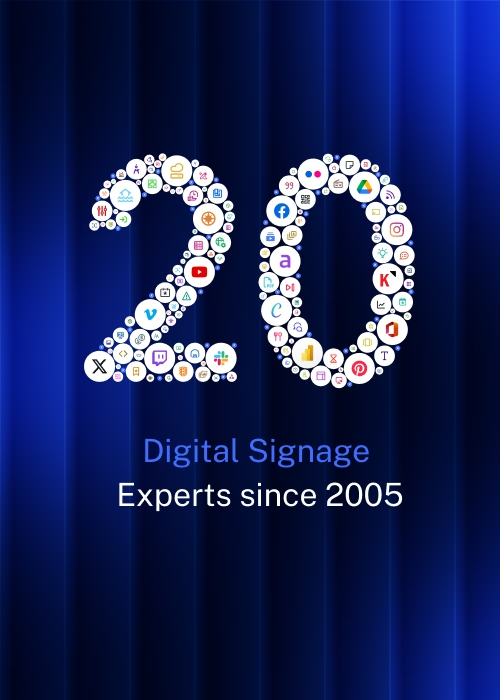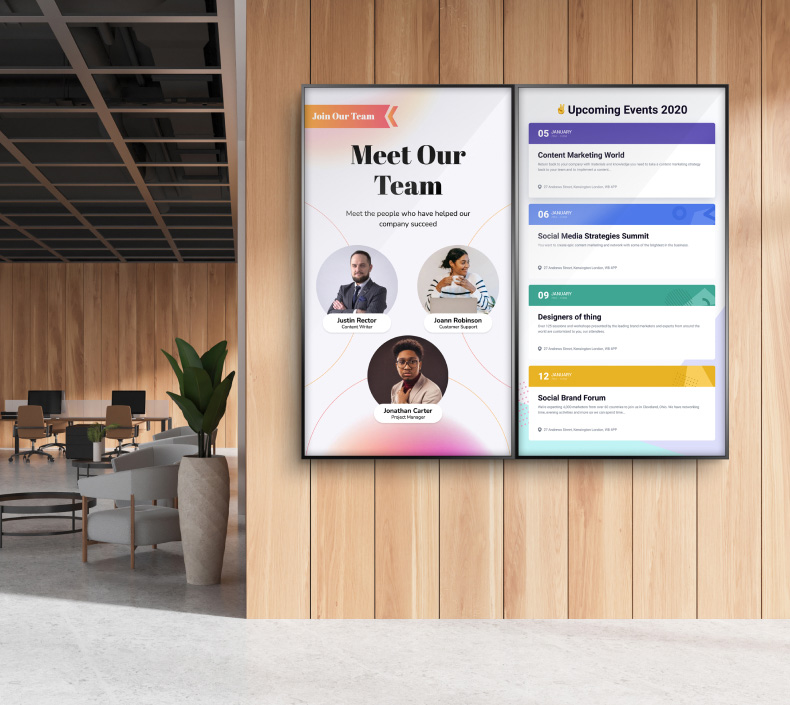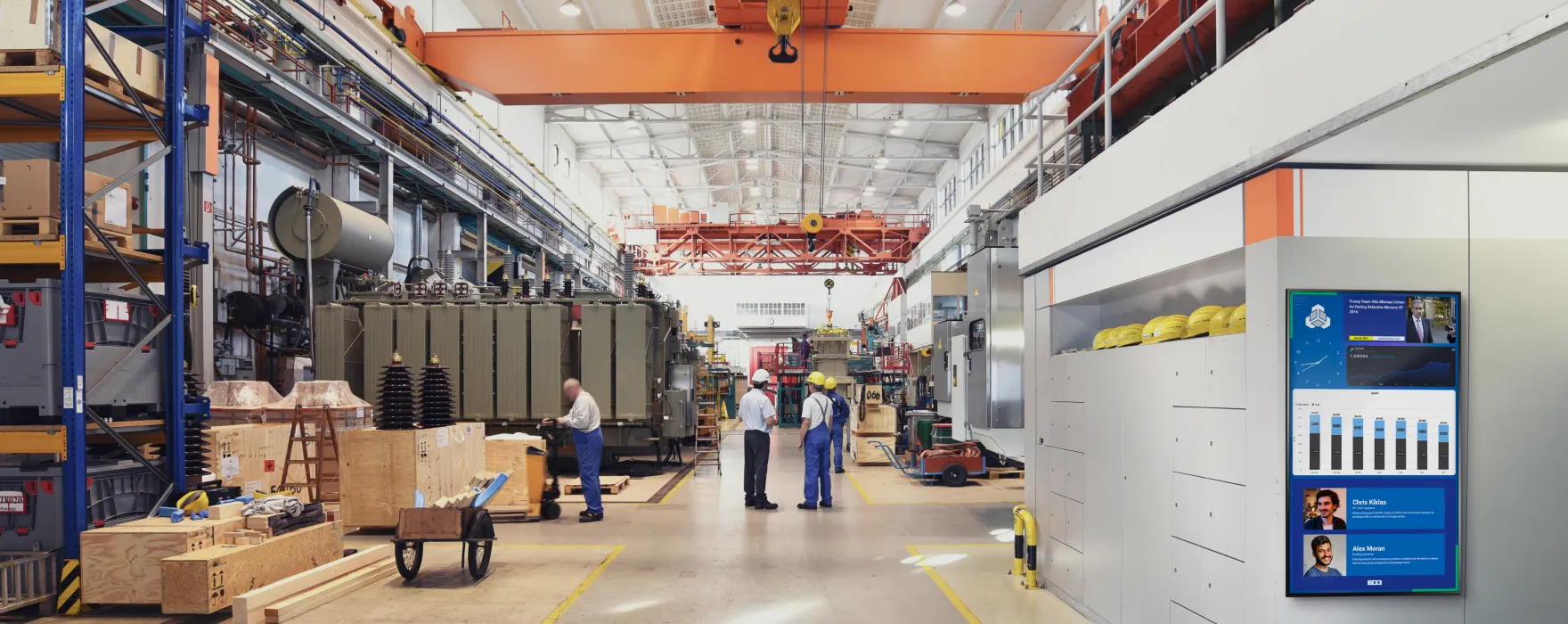The Future of Posters: Why Digital Poster Boards Are Replacing Print
For decades, posters were the go-to medium for spreading information, raising awareness, and promoting events. From movie theaters to school bulletin boards and retail store walls, printed posters shaped how people engaged with messages in public spaces. But in the era of instant updates, interactive content, and digital-first communication, the traditional poster is rapidly losing relevance.
Enter digital poster boards—a modern evolution of signage that merges high-definition displays, cloud-based software, and real-time updates. Unlike static paper posters, digital poster boards can adapt, engage, and measure impact in ways print never could. As businesses and schools increasingly prioritize flexibility, sustainability, and cost efficiency, digital poster boards are becoming the preferred choice for delivering messages that resonate.
What Are Digital Poster Boards?

Digital poster boards are screen-based displays (often LCD, LED, or e-paper technology) that showcase dynamic visual content such as announcements, promotions, dashboards, or videos. They are powered by a content management system (CMS) that allows administrators to update messages instantly across one or multiple screens.
Key features include:
- Remote content updates: Change posters across hundreds of locations in seconds.
- Rich media support: Video, animation, interactive touch, and data-driven feeds.
- Scheduling & automation: Pre-program campaigns for maximum relevance.
- Analytics & ROI tracking: Measure impressions, engagement, and conversions.
With these capabilities, digital poster boards extend far beyond “replacing print”—they open up new engagement opportunities that static posters can’t match.
Why Digital Poster Boards Are Overtaking Print
1. Cost Savings & ROI
While traditional posters may seem inexpensive upfront, printing and reprinting costs add up. Industry benchmarks show that organizations spend $20,000–$50,000 annually on printing posters across multiple locations.
By contrast, digital poster boards involve a one-time investment in hardware and a manageable software subscription. Content changes are instant and paperless. According to a Nielsen study, digital displays capture 400% more views than static signs and drive 47% higher brand awareness.
ROI Example:
- A university replacing print boards across 10 campuses saved $35,000 annually in printing costs while reporting a 70% improvement in student engagement with event updates.
2. Real-Time Flexibility
A poster announcing an event is useless if it’s outdated by the time it reaches viewers. Digital poster boards allow for immediate changes—whether updating event details, emergency alerts, or daily specials. Businesses can respond to market shifts instantly, while schools can keep students informed of last-minute schedule changes.
3. Sustainability Benefits
Printed posters require paper, ink, and logistics. Digital boards reduce waste and align with green initiatives, which is a growing decision factor for schools and companies committed to sustainability goals. According to the EPA, eliminating print campaigns can save hundreds of pounds of CO₂ emissions annually per location.
4. Data-Driven Engagement
Unlike print, digital poster boards integrate with analytics tools to track dwell time, content performance, and viewer interactions (in the case of touch-enabled boards). These insights allow organizations to optimize content strategies, ensuring that every poster delivers measurable impact.
Best Practices for Boosting Engagement with Digital Poster Boards
Adopting digital poster boards is just the beginning. To unlock their true value, organizations must strategize content and design for maximum impact. Here are proven best practices:
1. Prioritize Readability
- Use large, bold fonts with high contrast.
- Limit text to three key messages per poster.
- Ensure legibility from at least 10 feet away.
2. Leverage Motion and Video Thoughtfully
- Use animations sparingly to attract attention without overwhelming.
- Incorporate short looping videos (10–15 seconds) to highlight promotions or events.
- Include subtle transitions to keep the experience smooth.
3. Schedule Content for Context
- Morning: Daily schedules, safety reminders, motivational quotes.
- Afternoon: Event promotions, product spotlights.
- Evening: Announcements for next-day activities or late-night specials.
Stat Insight: Research from Intel shows scheduled digital signage content increases recall rates by up to 83% compared to unscheduled static content.
4. Encourage Interaction
Interactive poster boards (touch-enabled) allow students, employees, or visitors to:
- Browse event calendars.
- Look up maps and directories.
- Access real-time information such as transportation updates.
This interactivity transforms posters from one-way communication tools into engagement platforms.
5. Measure and Iterate
Leverage analytics dashboards to track:
- Most-viewed content.
- Average engagement time.
- Conversion rates (e.g., QR code scans, app downloads).
Refine campaigns based on measurable outcomes—something impossible with print posters.
Benefits Across Industries
1. Businesses
- Corporate Offices: Companies use digital poster boards for HR messages, compliance reminders, employee recognition, and performance dashboards.
- Example: A Fortune 500 company reported 20% improvement in employee survey participation after promoting feedback campaigns through digital posters.
- Example: A Fortune 500 company reported 20% improvement in employee survey participation after promoting feedback campaigns through digital posters.
- Retail: Stores display promotions, upsell products, and push loyalty programs.
- Example: Retail chains using digital displays saw a 30% increase in impulse sales (Nielsen).
- Example: Retail chains using digital displays saw a 30% increase in impulse sales (Nielsen).
- Hospitality: Hotels use boards for event schedules, wayfinding, and promotions.
- Example: Marriott reported 50% reduction in guest service desk inquiries after deploying interactive poster boards.
- Example: Marriott reported 50% reduction in guest service desk inquiries after deploying interactive poster boards.
2. Schools and Universities
Educational institutions are among the biggest adopters of digital poster boards due to their need for rapid communication across campuses.
- Announcements & Events: Replace cluttered bulletin boards with centralized displays.
- Emergency Alerts: Deliver campus-wide safety notifications instantly.
- Interactive Wayfinding: Help new students and visitors navigate large campuses.
Impact Metrics:
- Universities report a 60–70% boost in student engagement with extracurricular events when promoted on digital poster boards.
- High schools using interactive boards reduced missed announcements by 45% compared to reliance on print.
3. Healthcare
Hospitals and clinics use digital poster boards for patient education, wait-time management, and health campaigns. Studies show digital posters reduce perceived wait times by up to 35%, improving patient satisfaction.
4. Government and Public Spaces
City halls, courthouses, and transportation hubs deploy poster boards for citizen information, schedules, and directories. Digital poster boards improve efficiency by reducing printed flyer requests by up to 80%.
Quantifiable Benefits and ROI
Here’s how organizations can measure the value of digital poster boards:
- Cost Reduction: Eliminate annual printing and distribution expenses ($20K+ per year for medium organizations).
- Revenue Increase: Retail and hospitality sectors report 10–30% uplift in sales when using digital displays for promotions.
- Engagement Metrics: Schools see up to 70% higher event attendance from digital announcements.
- Sustainability Gains: Reduce thousands of sheets of paper waste annually.
ROI Example (Corporate Office):
- Hardware + software cost: $25,000 for 20 screens.
- Annual savings in print/poster costs: $18,000.
- Engagement improvement (employee surveys, compliance campaigns): Estimated $10,000 productivity benefit.
- Payback period: <18 months.
The Future of Digital Poster Boards
As technology evolves, digital poster boards are becoming smarter and more integrated:
- AI-driven content personalization: Tailoring posters to audience demographics in real time.
- IoT integration: Syncing with calendars, emergency systems, and data dashboards.
- Mobile tie-ins: Posters linking to apps via QR codes or NFC for deeper engagement.
- Sustainable hardware: Low-energy displays like e-paper and solar-powered units.
These innovations ensure digital poster boards will not only replace print but also expand communication possibilities across industries.
Conclusion
Digital poster boards represent the next generation of communication—dynamic, measurable, and sustainable. While print posters fade into obsolescence, digital alternatives empower organizations to:
- Deliver real-time, engaging messages.
- Save costs while achieving a faster ROI.
- Support sustainability initiatives.
- Boost student, employee, and customer engagement with quantifiable results.
For businesses and schools alike, the question is no longer “Should we replace print posters?”—but rather “How soon can we make the switch?”







